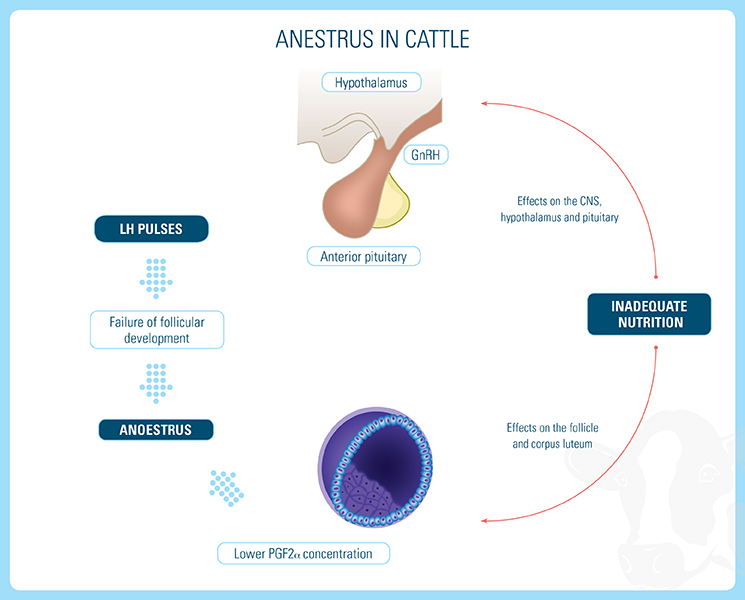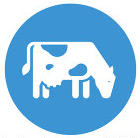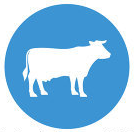

Anestrus
Lack of expression of estrus, usually characterized by a lack of ovarian progesterone production.
Anestrus may indicate:
- Suboptimal conditions –>Inadequate peripartum nutrition
- Pathological conditions –> Chronic debilitating diseases, uterine and ovarian diseases

Anestrus: the cow is not observed in estrus either because she has not come into estrus (not cycling) or because estrus was not detected (cycling).
True anestrus: the cow does not come into estrus due to inactive ovaries.
Subestrus: the cow has normal cyclic activity but is not observed in estrus due to weak or absent estrus behavior or insufficient observation.

Ovary in anestrus (no follicles visible)

Section of an Ovary in anestrus
The most recent classification of anestrus is based on the three functional states of follicular development: follicle emergence, deviation and ovulation1.


These factors influence cyclic activity resuming after calving:
- Nutrition
- Reduction in body condition score
- Suckling calf
- Lactation
- Dystocia
- Breed
- Age
- Month of calving
- Uterine pathology
- Debilitating disease
Treatment is based on:
- Improvement in energy status: optimal nutrition during the transition period and during early lactation
- Hormonal treatments: combined with increased energy supplementation or reduced suckling stimulus may also help to stimulate estrus
One should apply hormonal therapy with caution, because it is essential to correct management deficiencies first.
Treatment should also be matched to the type of anovulatory condition. There are four types.
Type I & Type II Anestrus
- Correcting the negative energy balance (NEB): a reduction in the length or elimination of dry period can attenuate NEB and reduce anestrus3.
- Hormonal treatment:
- Controlled intravaginal progesterone-releasing devices
- Intravaginal progesterone insert (IPI) followed by an injection of hormones such as equine chorionic gonadotropin, estradiol and of PGF2α
- Timed insemination protocols (e.g., OvSynch program)
Type III Anestrus
- Progesterone, GnRH and PGF2α treatment and subsequently timed-inseminated to treat persistent ovarian follicles.
- For follicular cysts, agents such as GnRH that induce the release of LH. If cysts become luteinized, luteal regression must be induced with PGF2α.
Type IV Anestrus
- PGF2α to terminate the life of the CL and initiate the estrous cycle.
High reproductive efficiency in the postpartum period requires prevention of:
- Deep NEB
- Development of fatty liver, which can reduce the immune competence and increase the incidence of infections and metabolic diseases
- Heat stress
And pay attention to:
- Management factors
- Abnormal transition
- Uterine conditions such as endometritis
- Peter, A.T., Vos, P.L., Ambrose, D.J. 2009. Theriogenology 71:1333-1342.
- Mozaffari, N., Hamali, H., Jafari, R. 2014. Int J Adv Biol Biom Res.; 2(1):146-150.
- Grummer, R.R. 2007. Strategies to improve fertility of high yielding dairy farms: management of the dry period. Theriogenology 68:5281-8.



